
GREEN INFRASTRUCTURE CONFERECE — Oct 25 – 26, 2022. Port of Spain, Trinidad and Tobago.
I was able to participate virtually for parts of this conference, organized by IAMovement and The National Gas Company of Trinidad and Tobago. The conference covered both development and financing opportunities for Green Infrastructure. The Vetiver System was well featured, and clearly is building governmental, regional institutional, and community support for its potential as a key tool for land restoration, soil and water conservation, slope stabilization, disaster mitigation, and associated business and community opportunities. Regional institutions like the Inter-American Development Bank are specifically interested in programs that address climate change and related Ecosystem-based Adaption (EbA). The Vetiver System generally fits well into required EbA criteria especially when relating to land restoration and helping people and their adapt to the effects of climate change. Ridge to Reef projects fit well here. Some short presentations by the University of the West Indies campus at St Augustine (I studied for a post grad Diploma in Tropical Agriculture there in 1963!) provided some background for some practical on site vetiver related research that is being carried out in cooperation with the IAMovement. The research is in its early stages and includes the effect of the reduction and impact of vetiver on slope soil moisture at various soil depths compared to other types of vegetation initial results indicate significant dewatering. Another research program is looking at the impact of vetiver on the growth of companion plants when associated with vetiver (feedback from Vietnam and Thailand have shown significant impact). Other research looks at impact of vetiver on soil temperature, soil moisture, and relative humidity. Thus far there are positive indications for all three, inferring improved conditions for land restoration. One can expect further benefits as the vetiver increases in growth over time.
TRINIDADIAN NON-PROFIT “IAMOVEMENT” is one of four winners in the Inter-American Development Bank’s “Superheroes of Development” contest.
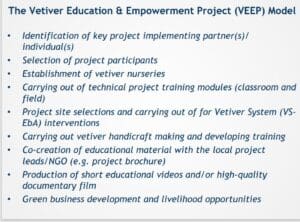
The IAMovement, a non-profit organization founded in 2014, amongst other activities, systematically promotes the Vetiver System at community level, has been chosen as one of the four winners the Inter-American Development Bank’s (IDB) “ Superheroes of Development” contest. The IAMovement’s Chairman is Jonathan Barcant, a TVNI Board Director, and CEO of Vetiver TT. Key to success of these vetiver based programs are: (1) the involvement of a wide range of community stakeholders (2) links between nonprofit organizations and private sector companies with experience and technical knowledge (3) a well proven technology (Vetiver Grass Technology) that is highly suited and adapted to the Caribbean climate and geography, (4) a systematic and supportive training program known as VEEP (Vetiver Education and Empowerment Project model (VEEP), (5) young and energetic, well trained staff, and (6) involving, understanding and responding to community/client needs.
The Vetiver Network West Indies website provides some interesting details and case studies. The IAMovement’s “Film Room” has some interesting short videos of community vetiver based programs in various Caribbean countries. They are nicely produced and give an excellent picture of community involvement and interest.
ON FARM VETIVER APPLICATION IMAGES FROM VIETNAM AND OTHER COUNTRIES.
Ngo Duc Tho of Vietnam who is founder and moderator of the Vietnam Vetiver Farmer’s Group, and TVNI Farm Advisor for Vietnam, has put together a very nice and useful photo gallery of on farm vetiver applications. He says he will update this on a regular basis. I recommend that you browse the gallery. I am sure he would welcome similar photos from our readers. … Thank you, Ngo Duc Tho.
RESTORATION OF GRAZING LAND IN WEST POKOT, KENYA
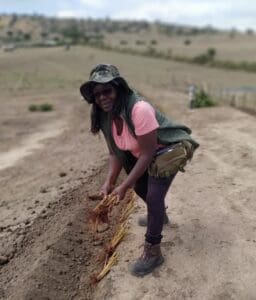
Earlier this year Jane Wegesa Fraser, Kenya Vetiver Network Coordinator (She is also a supervisory board
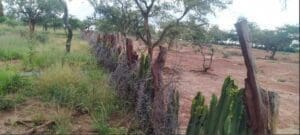
member at Ecosystem Restoration Camps) shared some photos of a highly eroded and degraded grazing/farm lands in West Pokot County of Kenya (50 Km north of Kitale — 1°26’02.1″N 35°09’46.8″E at an elevation of 5,400 ft.). The land was devoid of grasses and shrubs, gullied, and with serious sheet erosion
with all the top-soil eroded away. In June 2022 the Vetiver System was introduced with vetiver planted in earth bags on the contour. Vetiver was also used for gully stabilization, and for reinforcing other small conservation works. Pasture grasses and legumes were broadcasted over the entire vetiver protected area. A recent visit (5 months after planting) shows the area has been transformed. The photos below compare before and after. Note, after planting in June there was some very heavy flooding, the vetiver planted earth bags have proven very effective under such conditions. Interestingly the late Dave Riley of Queensland had some interesting ideas and suggestions about using soil bags. See: Bagging a Vetiver Hedge. It is possible that vetiver/earth bag applications may be less costly and more effective than polybagged (high transport costs) vetiver for extreme condition applications. I hope to be able to update more on this in our next newsletter.
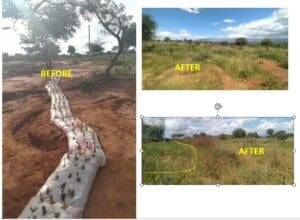
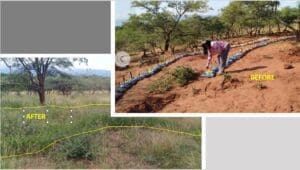
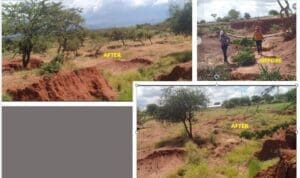
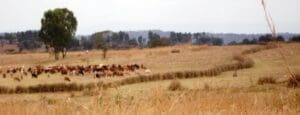
When visiting Ethiopia in 2009 I took this photo of cattle on vetiver protected pastures. It is interesting to note that the cattle leave the vetiver alone in preference to more palatable pasture grasses. Also there is no sign of erosion. In fact the water regime was so much improved that seasonal springs became year round. This farm at Ano, was once a very degraded and neglected state farm. Some 250 km of vetiver hedgerows were established as part of the restoration process.
VETIVER AS FARM/FIELD BOUNDARIES IN UGANDA.
Christian Makokha a key vetiver player in Kenya and Uganda posted the following images on the VENET (Tanzania) Whatsapp group. They not only do they demonstrate the vetiver hedgerows as very solid and defining boundaries, but also other likely benefits that the farmer may or may not realize; these include: significant leaf biomass available for mulch, thatch, handicrafts, and forage; erosion control and flood protection on these fairly flat (yes, flat land can erode) soils; habitat for beneficial insects (parasitoid wasps) and other wildlife; dead end trap-crop for stem borer of maize and sorghum; useful barrier against inflow of unwanted chemicals and stoloniferous weeds from neighboring farms; improvement in groundwater recharge; and soil organic carbon. If a monetary/economic value were calculated the overall benefits would be significant.
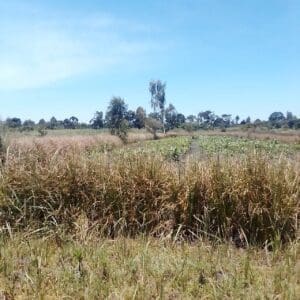
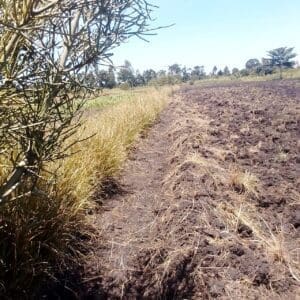
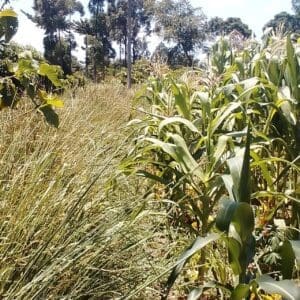
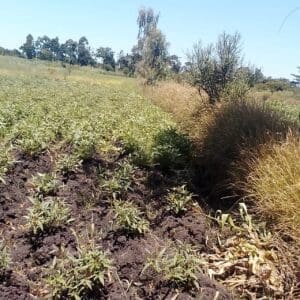
Photos 7, 8, 9, and 10. Vetiver hedgerows established to mark Ugandan farm/field boundary (west of Mt Elgon)
ON FARM VETIVER SYSTEM APPLICATION IN WESTERN ETHIOPA
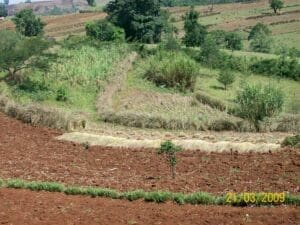
Vetiver was introduced to farmers of the Metu area in the early 1990s through the initiative of an Austrian NGO, Menschen fur Menschen. Today, there are
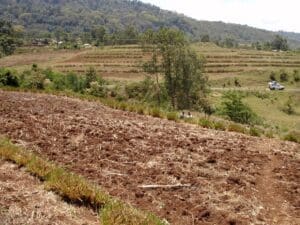
tens of thousands of farms protected with vetiver in this area. The key to this successful introduction was due to dedicated leadership of a team of well trained and educated young Ethiopians, provision of vetiver plant material, and farmers who had a need, and who were quick to learn of the advantages the technology. Today most of the expansion is through farmer to farmer knowledge transfer, and sale of on farm propagated vetiver. Introduction of large quantities of plant material and knowledge transfer, backed by appropriate government policies could further accelerate this scale up elsewhere in Ethiopia. Farmers have benefited greatly from reported yields and income benefits. Ethiopian vetiver users have long appreciated the many other benefits from vetiver including thatch, forage, bedding, pest control, rat reduction (habitat earth and rock contour bunds) and its use in cultural/religious ceremonies. They also appreciate how vetiver hedgerows have improved groundwater, resulting in the restoration of adjacent wetlands (used for grazing) and associated wildlife (birds in particular), and the extension of seasonal springs to perennial water flows.
HUASTECA REGENERATIVE AGRICULTURE EXPERIMENTATION CENTER – MEXICO.
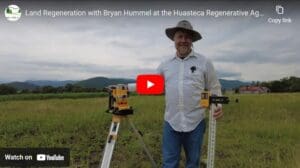
Located in Ejido of El Chino, in the municipality of Tamasopo, San Luis Potosí, Mexico. The Huasteca Regenerative Agriculture Experimentation Center will focus primarily on land and watershed regeneration by providing a ¨brick and mortar¨ outdoor laboratory for experimentation, research, and demonstration. Bryan Hummel, a land regeneration and groundwater recharge specialist, recently visited the center to lay out contour lines for vetiver hedgerows that are critical to the development of a polycrop food forest. A video records his visit and he demonstrates the layout techniques and has some useful views and observations. This experimentation center is new and is under development. It might be worth visiting the site from time to time to see progress. A more advanced regenerative farm using vetiver keylines is at Rancho San Ricardo located in northern Oaxaca – an introduction to this along with an interesting video is available from Terra Advocati.
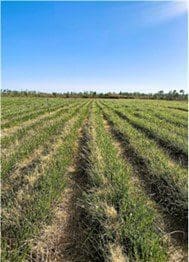
DARWIN, NT, AUSTRALIA. Shoals Bay Waste Management Facility (SBWMF) Upgrade.
The facility receives over 180,000 tons of waste per annum and has a forecasted operational life until 2034. To improve ongoing operational management and meet increasing regulatory and environmental standards, a number of upgrades are underway to advance the facility for the future.
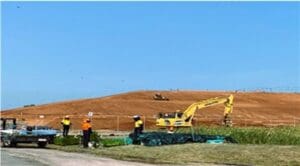
Leachate treatment system: from the leachate storage ponds, leachate will be pumped to a leachate treatment system designed to treat the leachate to a suitable quality for discharge within the site (i.e. via irrigation, dust suppression or to supplement water requirements for green waste management). Subject to an Environment Protection Approval, the leachate treatment plant (LTP) for SBWMF consists of the following elements: 1. Foam fractionation and extraction process for PFAS removal 2. Biological nutrient removal – Sequence Batch Reactor (SBR) combined with Moving Bed Biological Reactor (MBBR) 3. Dissolved air floatation (DAF) for solids removal 4. Constructed wetlands (vetiver) 5. Storage and center pivot irrigation of treated
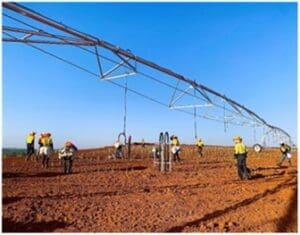
leachate over the vetiver grass constructed wetland. The treatment system has been sized to treat flows of up to 140 kL/day however is inherently scalable and flexible in nature to manage the fluctuating leachate generation rates outlined in Table 5-6. The storage of treated leachate will be within one of the existing leachate storage ponds (to be emptied prior to treatment operations). An Environmental Management Plan for Leachate Treatment and Irrigation (WCG 2020) has been prepared detailing the treatment methodology, outputs and monitoring requirements, and should be read in conjunction with this EMP. Vetiver grass will also be used to protect drainage systems on the site. Full details of complete upgrade. EPL188-environmental Management Plan 2021
For those interested this 2003 paper describes, amongst other techniques, the sprinkler irrigation of vetiver for the disposal of leachate at other Australian sites. Also see this photo essay
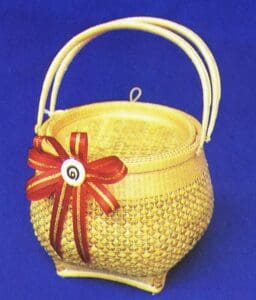
VETIVER HANDICRAFT TRAINING IN THE PHILIPINNES
We hope that the Central Bicol State Agricultural University can organize, using experienced Thai resource persons, a vetiver handicraft training course for trainers and users. Potential participants should message Melchora V. Abonal and tell her about your interest and that of your associates. The Thais bring vetiver handicraft making to a very high level (a fine art), and previous training courses have led to some very much improved handicrafts and to new handcraft enterprises. If this course materializes, I imagine that it will be held sometime in 2023.
VETIVER TRAINING IN GENERAL
Effective vetiver programs are dependent on well trained participants. Unless users fully understand how vetiver grass hedgerows function, how to apply vetiver grass technology to the many different applications, and how to actually propagate, plant and maintain vetiver, it is highly likely that optimum results will not be NOT be achieved. Potential users should either attend quality training courses/workshops or must take the time to read and understand the many guidelines that are available (all available as down loads from TVNI website)
In 2000 the Office of the Royal Projects Development Board of Thailand held a 10 day vetiver course funded by Heineken Breweries. It was an excellent and comprehensive course and the manual is available for download. It provides a lot of information that can be used to tailor training courses to fit particular venues and needs. More training information, with links to some useful and critical documents and guides, can be found at this page.
DISASTER IN VENEZUELA.
In response to the disaster that hit these two towns in Venezuela, Rafael Luque of Vetiver Anti-erosion wrote:
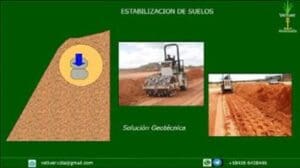
“Surely many of you will have read about catastrophic events that have recently occurred in Venezuela, specifically in Las Tejerias and El Castaño, both in the jurisdiction of the Aragua State. The last one in Maracay, the city where I live. I prepared this video as a proposal to the authorities for the reconstruction of the infrastructures.”
Vetiver Anti Erosion was a major player in the introduction of the Vetiver System to Venezuela. The video (in Spanish) could be usefully shared with others in Central and South America where extreme weather events are increasingly interacting with degraded landscapes resulting in very serious damage and loss of life.
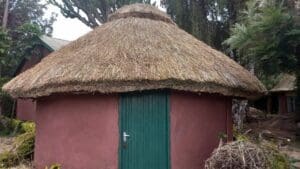
VETIVER THATCH
Thatching grass is, in many parts of the world, in short supply. At a time when climate change is resulting in extreme temperatures there is a good case to use more thatched roofs that help insulate the house. This works well so long as the thatch has a long life and is correctly applied as a roofing material. Thatch roofs may be a good solution for rural and poorer areas, and if correctly created could be better than a metal roof. Vetiver leaves and stems make excellent long-lasting thatch. They contain, when mature and dry, large quantities of long fibers and silicon. The leaves are slow to rot and are fairly insect lasting as thatch for +/- 20 years. Recently there have been some interesting exchanges on our Facebook page about thatching. Christian Makokha of Kenya has developed a successful vetiver thatching business and provides quality work. In Indonesia (where generally cogon grass – Imperata cylindrica – a really bad weed grass – is commonly used as thatch ) vetiver has been used successfully as thatch on some very large roofs.
There is quite a lot of information about the different methods of thatching available on the Internet and on YouTube. Here are some links to just a few.
Thatch – The Vetiver Network International
Thatch Roof Construction – Commonwealth Roofing training
Building a Thatch Roof House: Bushcraft Saxon House (Part 9)
How to make kugon roof for bahay kubo @Lemon Tree Farm part 1
NEW RESEARCH PAPERS
Functional Links between Biomass Production and Decomposition of Vetiver (Chrysopogon zizanioides) Grass in Three Australian Soils
(full paper download)
This paper infers very high potential vetiver biomass with much higher root biomass than previous research has shown. It also confirms the value of vetiver for land restoration – of course we also know there are additional benefits including improved ground water and reduced flooding. It would also suggest that even if all the above ground shoots were used for other purposes there would still be high root biomass in the soil that converts to soil carbon and SOM.
Abstract: Plant roots are primary factors to contribute to surface and deep soil carbon sequestration (SCS). Perennial grasses like vetiver produce large and deep root system and are likely to contribute significantly to soil carbon. However, we have limited knowledge on how root and shoot decomposition differ and their contribution to SCS. This study examined biomass production and relative decomposition of vetiver which was grown under glasshouse conditions. Subsequently the biomass incubated for 206 days, and the gas analysed using ANCA-GSL. The results confirmed large shoot and root production potential of 161 and 107 Mg ha−1 (fresh) and 67.7 and 52.5 Mg ha−1 (dry) biomass, respectively with 1:1.43 (fresh) and 1:1.25 (dry) production ratio. Vetiver roots decomposed more rapidly in the clay soil (p < 0.001) compared with the shoots, which could be attributed to the lower C:N ratio of roots than the shoots. The large root biomass produced does indeed contribute more to the soil carbon accumulation and the faster root decomposition is crucial in releasing the carbon in the root exudates and would also speed up its contribution to stable SOM. Hence, planting vetiver and similar tropical perennial grasses on degraded and less fertile soils could be a good strategy to rehabilitate degraded soils and for SCS.
Note: if you read the full paper it appears (para3.1) that there is a probable significant typo that shows the biomass was derived from a planting density equivalent to 85 plants/ha – should probably read 85,000/ha. FYI this planting density is equivalent to about 12 km of linear vetiver hedgerow. If hedgerows are planted 20 meters apart on a 20% slope, this 12 km of hedge would be suffice for approximately 24 ha of protected land (about 2 tons of vetiver root dry matter per ha).
Two recent socio-economic research papers (below) from Nigeria
shed light as to farmers interest in the use of vetiver. It appears that farmers are aware of the technology, particularly women, and those with better education. It would also appear that the non-soil conservation benefits may be, in the first instance, of greater importance. This supports my long held view that we must educate farmers and their communities about the many different applications of vetiver, and how they provide end users with an extraordinary useful tool kit to obtain a wide range of economic benefits. This also means that soil conservation and general agricultural extensions staff, both in government and non-government organizations, should be made aware of vetiver’s wide range of applications.
Effects of Vetiver Grass Strips Technology (Vgt) Adoption on Poverty of Crop Farmers in Nigeria. (2022)
Abstact
Abia state faces severe soil erosion problem which affects agricultural production and poverty of crop farmers. The use of vetiver grass strips technology (VGT) helps control soil erosion, enhance crop yield, increased farmers’ income and reduce poverty. However, there is a dearth of information on the effect of adoption of VGT on poverty in Abia State. Therefore, the poverty status of crop farmers’ adopters in Abia State was investigated. 250 farming households were randomly selected proportionate to the size of the cells. Data on socio-economics of the farmers, awareness and adoption of VGT, inputs and outputs of crops, expenditure on food and non-food items were collected using a structured questionnaire. Data were analyzed using descriptive statistics, Foster, Greer and Thorbecke model, and probit regression at α0.05. The results showed that the average age of the respondents was 48 years. The household size and farm-size were 6 members and 2ha. 59.2% of the respondents were aware of VGT but 49.6% adopted. Most of the adopters of VGT were females with farm size of 1.57 ha, and 42.7% of them had tertiary education. Adoption of VGT reduced poverty incidence by 21.0% for the adopters. The study recommends effective extension services for farmers. VGT being low-cost helps to reduce the poverty level of the farmers and hence government should invest more resources on this technology. Further research should be on poverty reduction and involving of government intervention programme in the study area.
Note, almost 60% of farmers were aware of vetiver, and almost 85% of these had actually adopted it … and that woman farmers led the way.
Farmers’ awareness of the potential of vetiver grass for soil erosion control on Ogbomoso Agricultural Zone farmlands, south-western Nigeria (2022)
Abstract
Background: Soil degradation remains a serious threat to agricultural production. With increase downpour due to climate change effect, more farmlands are exposed to erosion. Therefore, ecologically sound strategies for erosion control are indispensable to farmers, to boost agricultural productivity.
Results: A multistage sampling technique was used to select the respondents for this study, and descriptive and inferential statistics were adopted to determine the farmers’ perception of the awareness, adoption and use of vetiver grass technology in controlling erosion in the study area. A total of four hundred valid questionnaires were subjected to analysis and the result shows that most of the farmers (29%) were between the ages of 41 and 50 years and the average age of the respondents stood at 45.5 years, implying that the farmers were in their productive and active age. Most of the respondents were male and married with an average household size of 5.2. Large number (76%) of the respondents had formal education, which the level ranged from primary to post-secondary education. Large proportion of the respondents engaged in private business as secondary occupation with an average income of $84.6 per cropping season. The effectiveness of vetiver grass adoption and use was significantly influenced by age (P < 0.1), gender (P < 0.01), marital status (P < 0.05), level of education (P < 0.01) and income of the respondents (P < 0.05). Most of the respondents within the ages of 41–50 years were aware of the erosion control potentials of vetiver grass and adopted the grass because it was cheap and affordable, easy to cultivate and maintain, and readily available and perceived to possess the potential effectiveness to control erosion.
Conclusion: Stakeholders are enjoined to increase the awareness of the vetiver grass for increased adoption and utilization, as many farmers were ignorant of the vetiver grass technology for erosion control in the study area.
Additional information (Table 5) shows the use of vetiver grass by the respondents in the study area. 56.3% of the farmers in the study area were using vetiver grass for demarcation of farmland; 49% were using the grass as roofing material; 73.2% of the farmers were using the grass for pest control; 52.5% used the grass for animal feed; and 38.8% of the farmers used the grass for the herbal skin care. The results indicate that the most important farmer use for vetiver grass was for controlling pests. It’s use for livestock feed and roofing materials was also highly ranked. It use as herbal skin care was ranked fourth; controlling erosion was ranked fifth and its use for farmland demarcation was last.
Here are three papers/articles from the past that are worth a re-read.
At that time we knew the potential benefits of the technology — it has taken a long time to learn how to promote. We are not there yet, but getting a little closer. Our fast changing climate and socio-economic conditions make Vetiver Grass Technology an important tool box to provide solutions in the short term.
Vetiver grass — Central American Watersheds (1998)
Vetiver Grass for Disaster Mitigation and Vulnerability Reduction (2000):
Vetiver Grass and Agricultural Sustainability (1994)
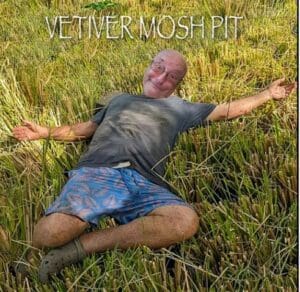
A farewell salute to Dave Riley of Grow Vetiver.
Our urban gardener! We have lost a good vetiver friend when Dave Riley, from Queensland, unexpectedly died earlier this month. Dave was a very active vetiver user. He worked closely with his local community introducing vetiver as a permaculture tool and was a key supplier of vetiver plant material. He was always experimenting with various uses of vetiver. He generously shared his ideas and provided practical guidance to many “newbies”. One way to remember Dave is by reading his various Facebook posts . We will miss you Dave, but your ideas, support , and humor remain.
The ‘GREEN INFRASTRUCTURE CONFERENCE — Oct 25 – 26, 2022. Port of Spain, Trinidad and Tobago’ came to mind today after reading an article in the local newspaper entitled ‘Above average April showers trigger flash floods’ Trinidad and Tobago Guardian (April 26, 2023).
It included a quote from the TT Met Service:
‘With a warmer climate, though T&T has recorded lower overall rainfall in the Dry and Wet Seasons, extreme precipitation has increased. Since 1985, the TTMS has recorded an increase in the number of extreme single-day rainfall events, extreme three-day rainfall, and an increase in the percentage of rain these extremely wet days contribute to our annual rainfall totals.’
This could provide further evidence for the IAMovement as the group advocates the utility of the Vetiver System.
This video https://youtu.be/VehzvhuL8uU?t=154 mentions the practice.
Best regards.
Sorry to hear of the passing of Mr. Riley.
Regarding photos eleven and twelve, there seem to be regular gaps in the hedgerow? I seem to remember from previous literature on vetiver grass in Ethiopia that farmers with well established hedges would carve planting material to sell. Perhaps this is still the case.
Dick Grimshaw
Yes, they do use hedgerows for plant material. Sometimes it leaves a temporary gap; preferably the hedge should be split linearly taking plants from the lower part.